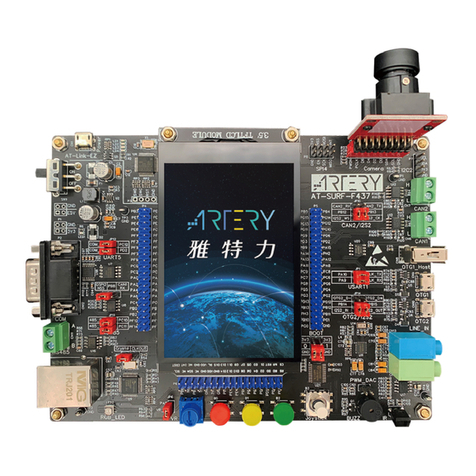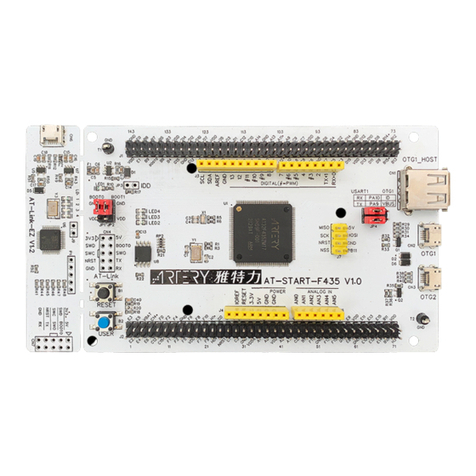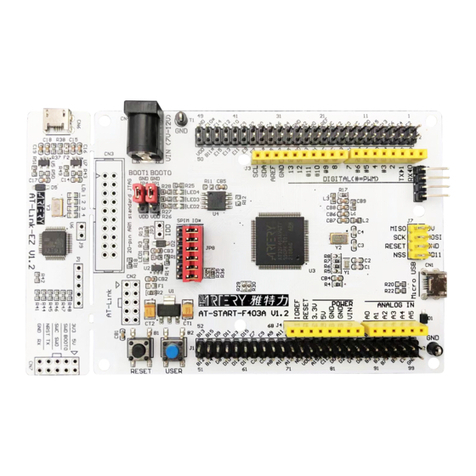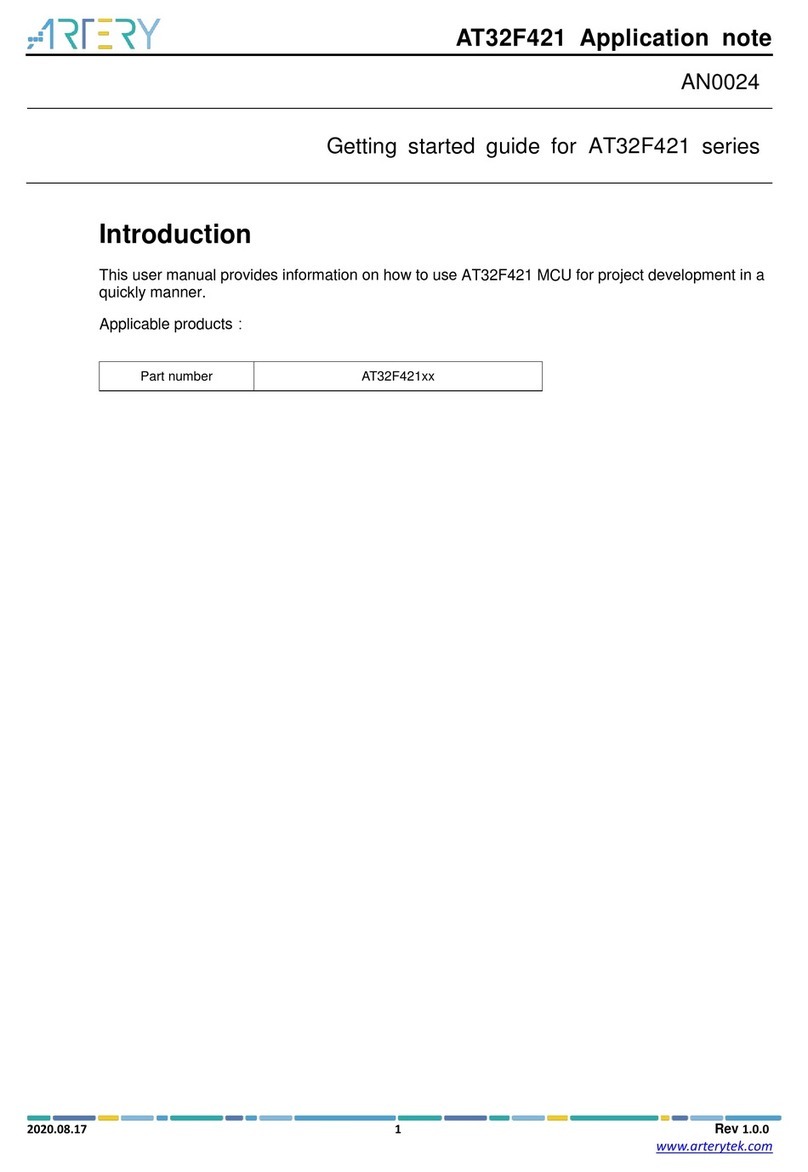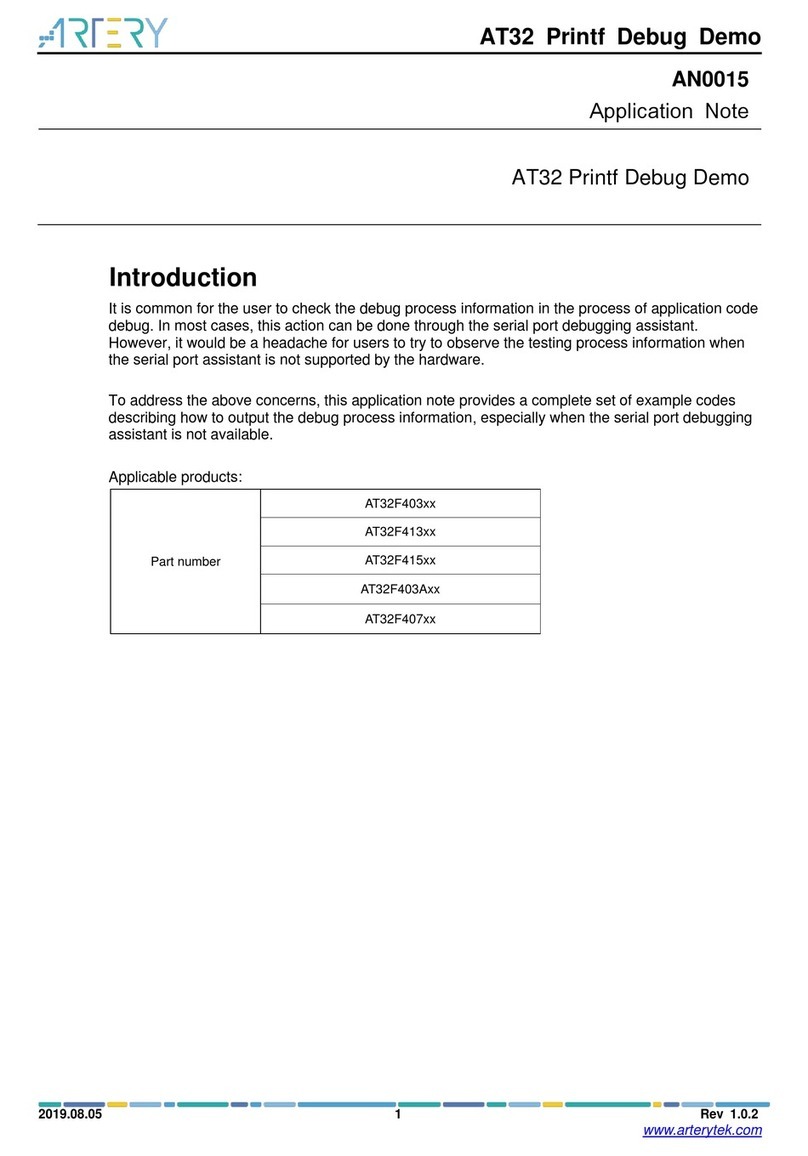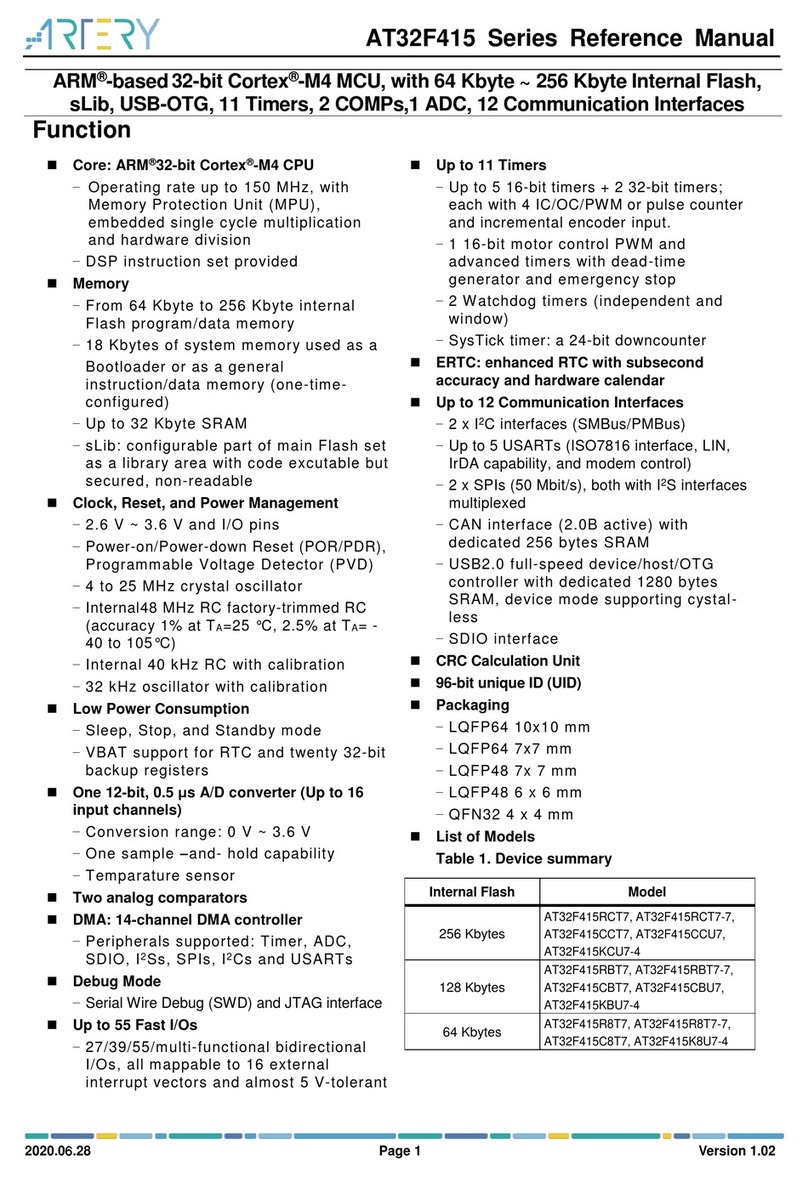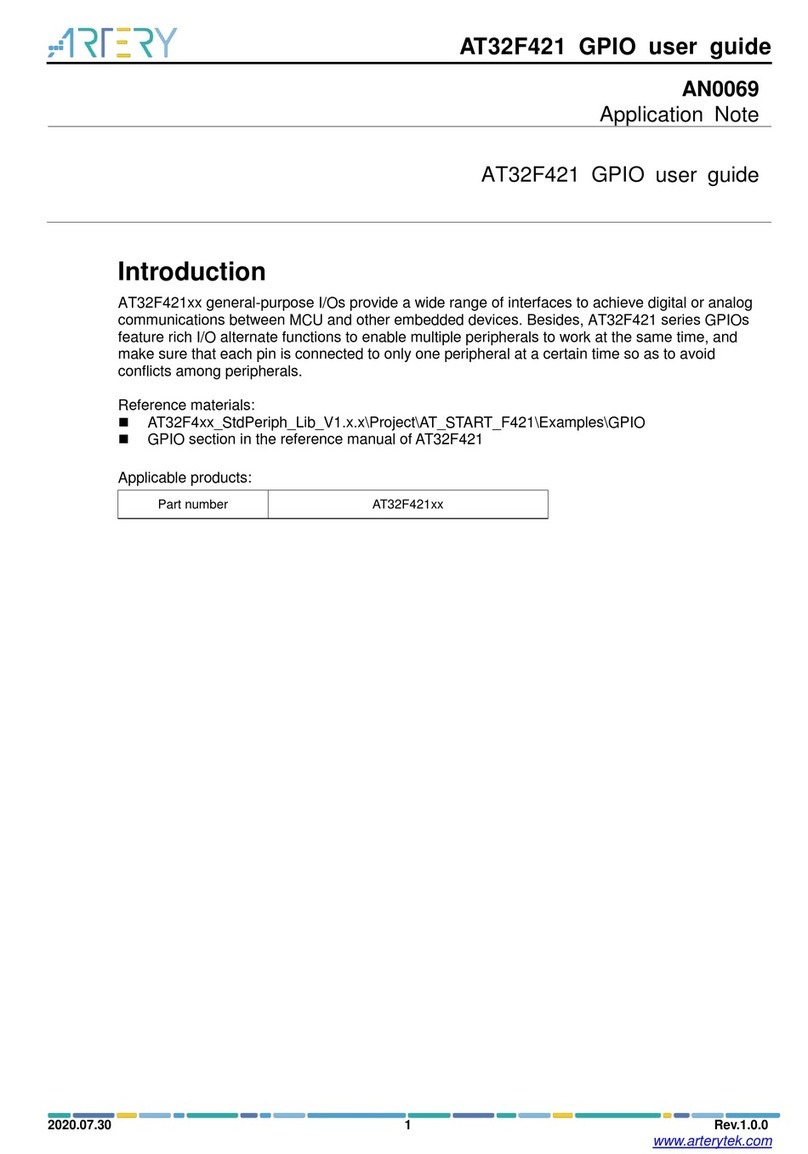AT32F421 Series Reference Manual
2022.11.11 Page 10 Rev 2.02
14.1.3.3 Debug mode ......................................................................... 173
14.1.4 TMR6 registers ..........................................................................174
14.1.4.1 TMR6 control register1 (TMRx_CTRL1) .................................. 175
14.1.4.2 TMR6 control register2 (TMRx_CTRL2) .................................. 175
14.1.4.3 TMR6 DMA/interrupt enable register (TMRx_IDEN) .................. 175
14.1.4.4 TMR6 interrupt status register (TMRx_ISTS) ........................... 176
14.1.4.5 TMR6 software event register (TMRx_SWEVT)........................ 176
14.1.4.6 TMR6 counter value (TMRx_CVAL) ........................................ 176
14.1.4.7 TMR6 division (TMRx_DIV).................................................... 176
14.1.4.8 TMR6 period register (TMRx_PR)........................................... 176
14.2 General-purpose timer (TMR3).................................................... 177
14.2.1 TMR3 introduction ......................................................................177
14.2.2 TMR3 main features ...................................................................177
14.2.3 TMR3 functional overview ...........................................................177
14.2.3.1 Count clock .......................................................................... 177
14.2.3.2 Counting mode ..................................................................... 181
14.2.3.3 TMR input function................................................................ 184
14.2.3.4 TMR output function.............................................................. 186
14.2.3.5 TMR synchronization............................................................. 190
14.2.3.6 Debug mode ......................................................................... 192
14.2.4 TMR3 registers ..........................................................................192
14.2.4.1 Control register1 (TMR3_CTRL1) ........................................... 193
14.2.4.2 Control register2 (TMR3_CTRL2) ........................................... 194
14.2.4.3 Slave timer control register (TMR3_STCTRL) .......................... 194
14.2.4.4 DMA/interrupt enable register (TMR3_IDEN) ........................... 195
14.2.4.5 Interrupt status register (TMR3_ISTS) .................................... 196
14.2.4.6 Software event register (TMR3_SWEVT)................................. 197
14.2.4.7 Channel mode register1 (TMRx_CM1) .................................... 197
14.2.4.8 Channel mode register2 (TMR3_CM2) .................................... 199
14.2.4.9 Channel control register (TMR3_CCTRL) ................................ 200
14.2.4.10 Counter value (TMR3_CVAL) ............................................. 200
14.2.4.11 Division value (TMR3_DIV) ................................................ 201
14.2.4.12 Period register (TMR3_PR) ................................................ 201
14.2.4.13 Channel 1 data register (TMR3_C1DT) ............................... 201
14.2.4.14 Channel 2 data register (TMR3_C2DT) ............................... 201
14.2.4.15 Channel 3 data register (TMR3_C3DT) ............................... 201
14.2.4.16 Channel 4 data register (TMR3_C4DT) ............................... 202
14.2.4.17 DMA control register (TMR3_DMACTRL)............................. 202
